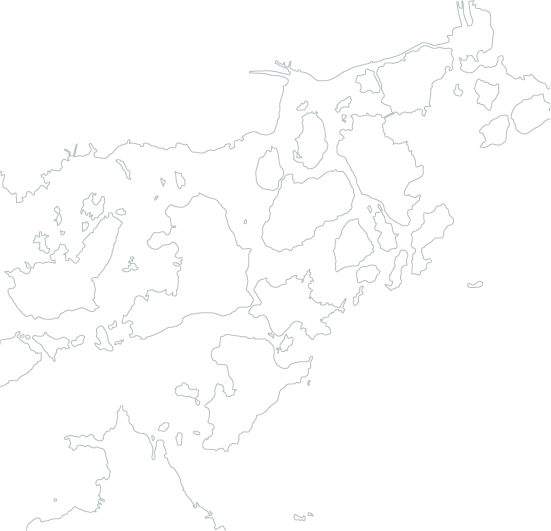
Japan Heritage Murakami Kaizoku
What are protective pirates?
Find the answer here.
Rather than attacking and looting, these pirates protected.
In addition to protecting the safety of the ships passing through the region, the Murakami Kaizoku also protected the beliefs passed down from their forebears,
their irreplaceable peaceful lifestyle and culture that was the envy of feudal lords,
and more than anything, the beautiful scenery of the Seto Inland Sea.
A journey following in the footsteps of the Murakami Kaizoku is perhaps a journey to discover the true values of the Japanese spirit.
Murakami Kaizoku
the Story
Japan's Greatest Pirates
Pirates once sailed the Seto Inland Sea. They were the Murakami Kaizoku, called the greatest pirates in Japan by Luís Fróis, a Portuguese missionary who recorded the history of Japan during the civil war period.
However, these pirates did not attack ships without provocation to loot their riches. Rather, they played the role of ensuring the safety of the seas according to strict rules to maintain order for the trade and shipping on the Seto Inland Sea.
The headquarters of the Murakami Kaizoku was a dense island chain called the Geiyo Islands. While the surface of the sea seems tranquil there, violent currents mercilessly assault any ship that attempts to traverse the narrow channels between them. It is one of the more difficult sea lanes to navigate, and has caused difficulties for mariners since ancient times.
For this reason, the help of the Murakami Kaizoku, who had deep familiarity with these waters, was in demand, and they used their location to their advantage well to become the champions of the Seto Inland Sea.
Protectors of maritime gateways
The Murakami Kaizoku first appeared in the historical record in the Nanboku-cho period. During this time, they grew from a small force which protected passing ships to a major power that controlled the entire Geiyo Islands.
This was made possible by the strong fellowship between three houses which together called themselves the Murakami Family. Each family built seaside forts on different islands in the chain, with the Innoshima Island Murakami family controlling routes on the Honshu side, the Noshima Island Murakami family controlling the shortest maritime routes through the center, and the Kurushima family controlling the sea lanes on the Shikoku side of the island chain. This strategic deployment of forts at chokepoints on the sea lanes allowed them not only to be ready for sea battles, but enabled them to control East-West trade by turning the Seto Inland Sea into a maritime gateway.
When Fróis and his group sought the Murakami Kaizoku for safe passage , the pirates handed them their seal and a flag with their coat of arms saying, “Just show this flag if you see a suspicious ship.” This pennant eventually became a travel pass, known as the “Kasho Senki,” or “ensign of passage.” The Murakami Kaizoku provided protection to the ships of feudal lords and merchants with this pennant, as well as piloting services, and collected passage fees in exchange.
First in business and culture
The Murakami Kaizoku wore other hats in addition to serving as the protectors of maritime safety.
They were merchants who used the island chain as a base for shipping. They were men of culture with a taste for the luxuries of incense, tea, and renga poetry. They were also fishermen who harvested the fresh seafood of the Seto Inland Sea. That beginning is still evident today in the local cuisine that makes rich use of that seafood bounty.
The history and culture of this region still reflects that past at a scale greater than one can imagine. If you visit the Geiyo Islands that connects the cities of Onomichi and Imabari, not only will you enjoy beautiful vistas filled with the many islands, but you will be able to follow in the footsteps of the Murakami Kaizoku, called Japan’s greatest pirates.
The Geiyo Islands,
Home to the Murakami Kaizoku

- Onomichi
- Mukaishima
- Innoshima
- Ikuchijima
- Omishima
- Hakatajima
- Oshima
The “Setouchi Shimanami Kaido” connects the islands of the Geiyo Islands dotted through the Seto Inland Sea with bridges.
The 70 km long cycling course located along the Shimanami Kaido is the first cycling route in Japan that traverses a sea strait.
The cycling course on the Shimanami Kaido, featuring breathtaking views of beautiful natural scenery, is known as the Cyclist’s Heaven and has been selected as one of CNN’s top seven cycling courses in the world. Cyclists can travel through the Geiyo Islands to experience the history and culture of each island along with the beautiful views.
The route along the Shimanami Kaido is sprinkled with numerous bicycle rental terminals and “Cycle Oasis” rest stops, allowing anyone to enjoy the experience of cycling. Why not come and experience the history of the Murakami Kaizoku hidden in the Geiyo Islands as you journey along the Shimanami Kaido by bicycle?
